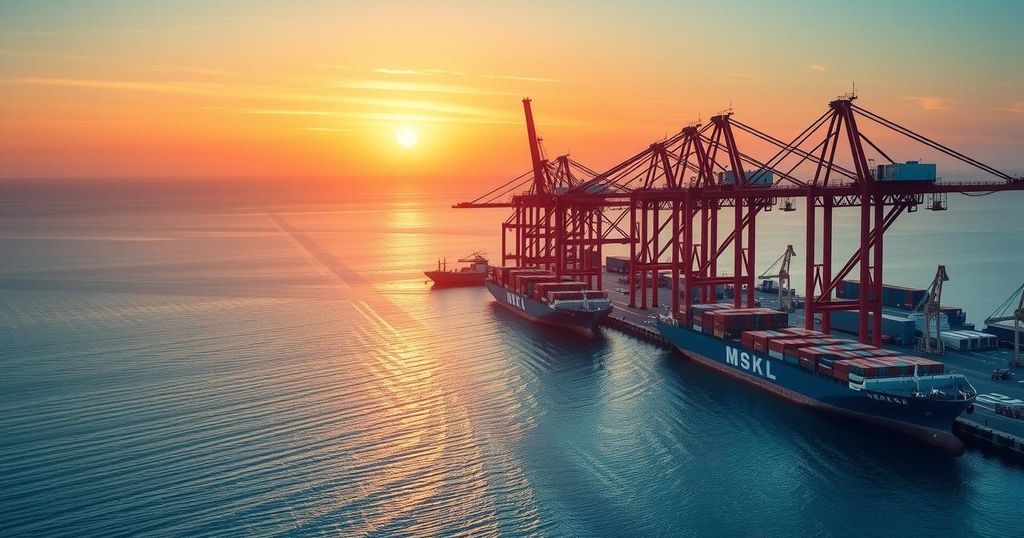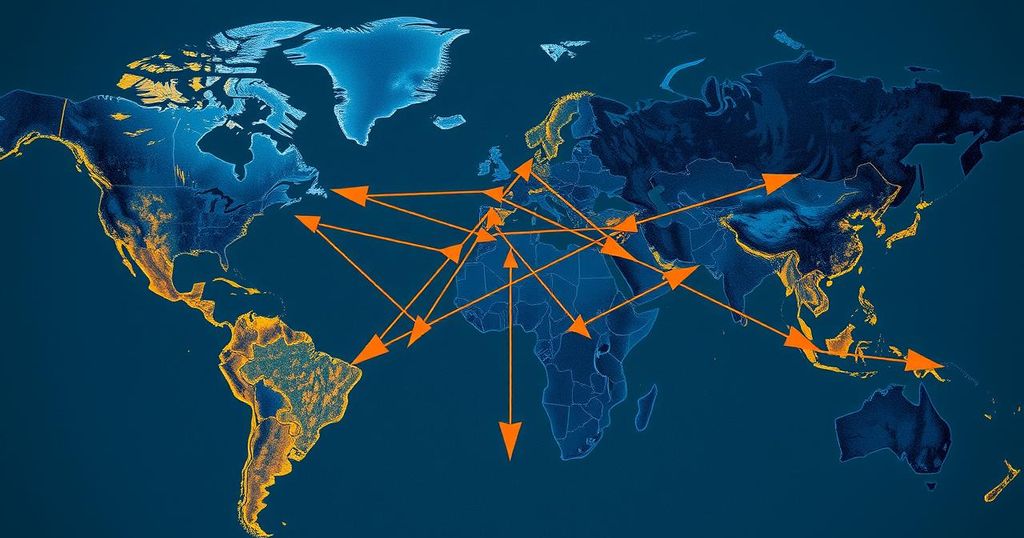Politics
AMERICA, ASIA, BRAZIL, CHINA, COSCO SHIPPING, DINA BOLUARTE, DONALD TRUMP, FOREIGN POLICY, GEOPOLITICS, MONICA DE BOLLE, NORTH AMERICA, PEOPLE ' S DAILY, PETERSON INSTITUTE FOR INTERNATIONAL ECONOMICS, SHANGHAI, SOUTH AMERICA, SOUTH CHINA SEA DISPUTE, THE, TRADE RELATIONS, TRUMP, UNITED STATES, US-CHINA RELATIONS, WASHINGTON, XI, XI ( JINPING
Clara Montgomery
China’s New Megaport Signals Shift in Latin America Amidst US Concerns
China has inaugurated the Chancay megaport in Peru, signaling a shift in trade dynamics that may undermine US influence in Latin America. The $3.5 billion port is set to facilitate enhanced trade routes from South America to Asia, while also raising security concerns regarding Chinese military access. This development arrives against a backdrop of a potential change in US leadership and strategy in the region.
The establishment of a new China-backed megaport in Chancay, Peru marks a significant expansion of China’s influence in Latin America, a region traditionally dominated by the United States. President Xi Jinping’s presence at the port’s inauguration underscores the importance of this project, which is poised to reshape trade routes that bypass North America entirely. The $3.5 billion port is expected to facilitate trade not only for Peru but also for neighboring countries, enhancing China’s access to South American resources while presenting a competitive challenge to US interests.
As the port begins operations, goods from various Latin American nations such as Chile, Colombia, and Ecuador will flow through Chancay, significantly cutting shipping times and allowing China to broaden its market reach. The port, capable of accommodating larger vessels, is also positioned to facilitate the import of Chinese goods into the continent. This development comes at a time when domestic industries in Latin America are expressing concern over the influx of cheaper imports from China.
The strategic implications of the Chancay port are profound, raising concerns within US military and political circles. General Laura Richardson, former head of Southern Command, warned that this infrastructure could serve dual functions, potentially allowing military access for China’s naval forces. This perception heightens worries that the US is ceding ground in a region where it has historically been influential, especially as China’s Belt and Road Initiative progresses.
China’s recent inauguration of the Chancay megafacility reflects a broader trend of increasing Chinese engagement with Latin America. The region’s vast natural resources make it a desirable partner for China, which has expanded its investments significantly over the years. Meanwhile, the US has reportedly adopted a passive approach toward its southern neighbors, resulting in an opportunity for China to embed itself within Latin American economies. This shift raises questions about future US-Latin America relations, particularly in light of a potential Trump presidency, which may advocate for renewed challenges against Chinese expansion. As Latin American countries search for economic growth, many have begun to look beyond traditional partnerships and consider the strategic alliances offered by China. The current diplomatic landscape suggests that Latin American nations are reevaluating their foreign policies, influenced by immediate economic needs and the lure of Chinese investment.
The emergence of the Chancay megaport highlights a pivotal point for US-China relations, particularly in Latin America. China’s overarching ambitions in the region are being met with increased apprehension from the US, which has historically viewed Latin America as part of its sphere of influence. As China continues to solidify its presence, the ability of Latin American countries to navigate this geopolitical landscape will become increasingly crucial. Consequently, there is a pressing need for the US to enhance its strategic engagement with the region to preserve its influence amidst China’s rapid expansion.
Original Source: www.bbc.com








Post Comment